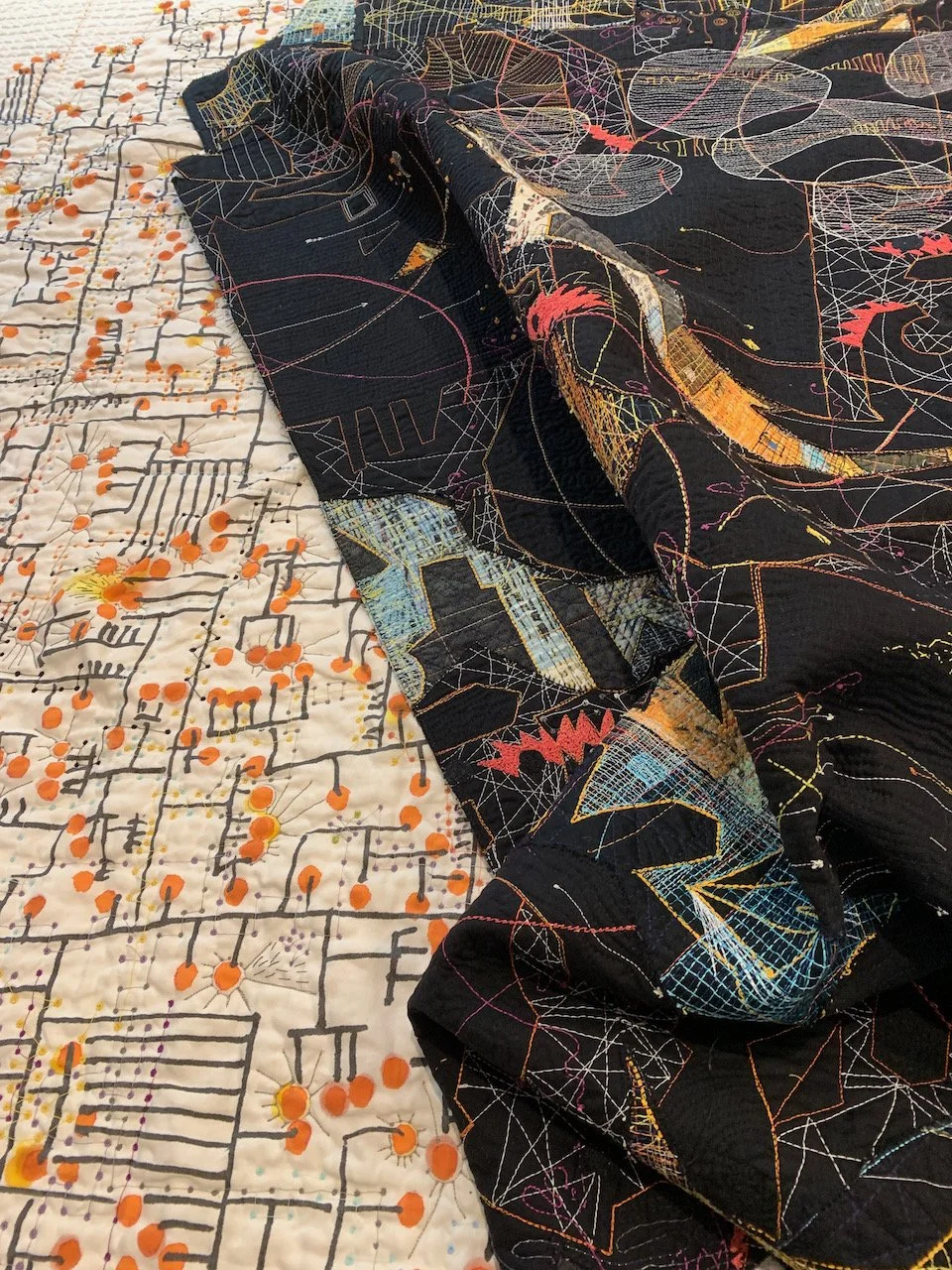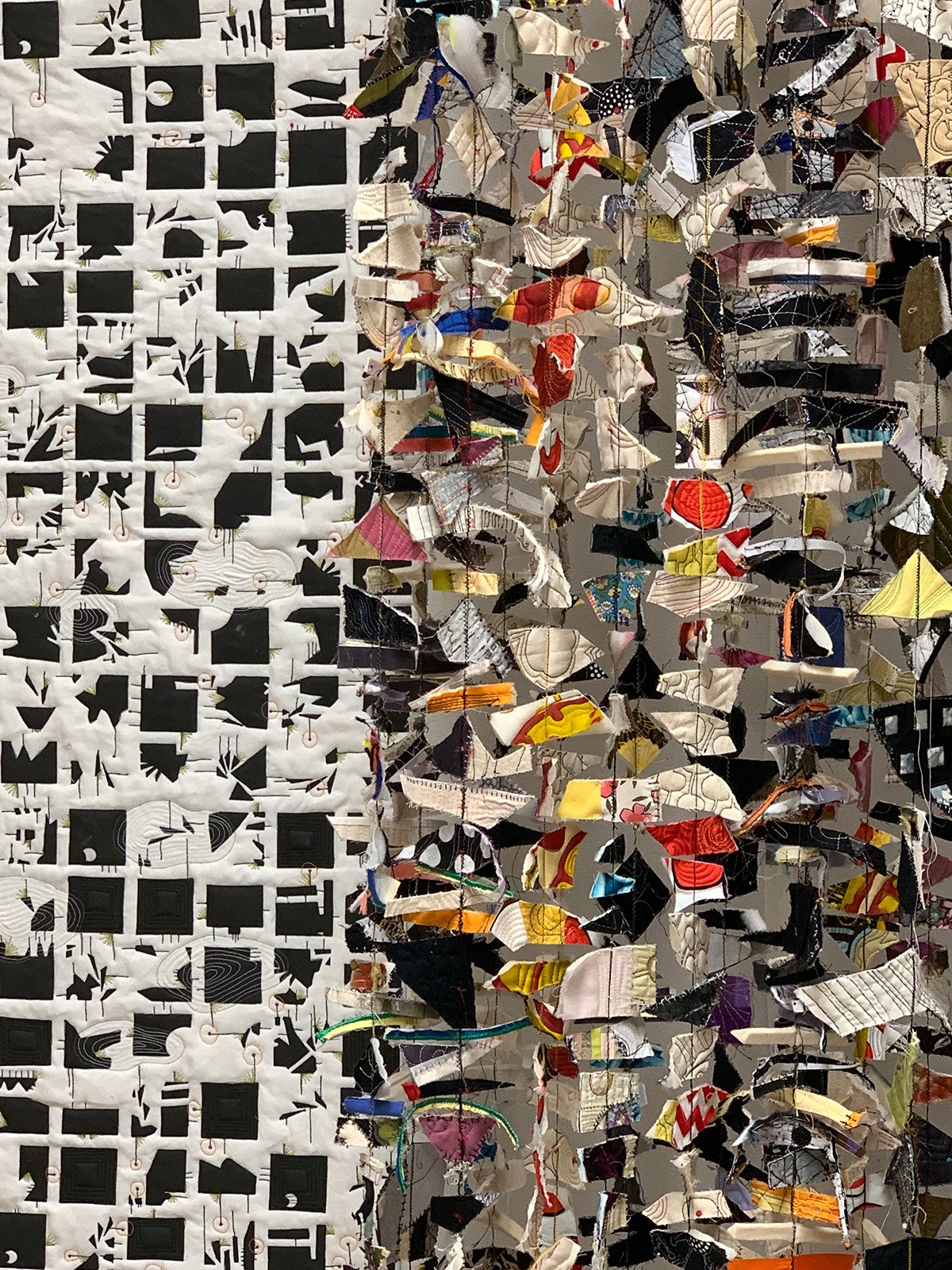I work on many projects at the same time. If not, I get bored. I like how pieces morph and talk to each other as they progress. I can sometimes see similarities other times big differences. Techniques can change while concepts are basically the same. I am influenced by my readings and by the news, and by the walks I take to catch a breath. Lately I use my art to distract myself from the feeling of dread when I watch the news.
Two works in progress, Nonsense on the left and Letting Go on the right.
Play
Sometimes I just like to have fun. The piece on the left in the picture above is done on a piece of whole cloth I designed and had printed at Spoonflower. The cartoonish figures gave me a playground for stitching.
I like to layer my stitching to create a sense of movement or depth.
I’m always looking for surprises. Check out this dude peaking out from behind the black squares.
Nonsense, 49.5” x 35”, Paula Kovarik
Parts are smaller than the whole
Over the course of ten years I have accumulated baskets of scrapped quilted pieces. They are not only offcuts but also pieces that I cut up after being disappointed with the results of a composition. About seven years ago I made some garlands of the scraps that reminded me of the beaded curtains that were so popular back in the day. Those curtains always seemed to signal a mystery behind them. They obscured an opening while also creating a gateway that was easy to traverse. They were a little mysterious but also enchanting and magical. So, as I accumulated more and more garlands this scraps piece has evolved to be more than its parts. These scraps represent my process, my trajectory and my history as an artist. They also stand witness to the mistakes I defined, the trial and error that I experienced, and the idea that I just have to let go. It’s a work in progress and morphs every day.
I’m starting to curate the scraps. There are days when I look around at other pieces I have created and wonder if they too should be cut up and strung together.
Colonies
We talk about colonies in space, colonies on land and colonies of bacteria. Each type of colony has an intrinsic architecture that fastens the parts to the whole. That architecture is something we have in common with other species.
Once I had the opportunity to follow the trails of leaf cutter ants from a tree that they were dismantling scrap by scrap to their colony in a dirt bank down the road. I was mesmerized. Not only were they a little army of workers but also they had guards, emergency crews, dancers, choppers, lifters, slackers, and buried somewhere deep within, a queen. Their trails, structures and actions are mirrored in our own cities, countries and families.
In the NPR series Searching for Meaning: Our Quest for Meaning in the Age of Science Alan Lightman says that “Meaning must be found in the moment even as we yearn for immortality.” I was totally in the moment, filled with awe, while studying that leaf cutter colony. The focus from macro to micro made me a conscious witness to a separate reality.
Colonies, a work-in-progress, Paula Kovarik
“Colonies” could represent microscopic detail but also resembles aerial shots of land and developments. I am somewhere between those two ideas for now.



































